WARNING: The following text is purely an analysis of memes (and narratives, vibes) that define the crypto privacy sphere. It is not a technical discussion. If you came here to learn more about how DarkFi works on a technical level, read this blog post or the DarkFi book and stay tuned.

Memes are hieroglyphs through which the future manifests. Bad memes destroy themselves. Good memes spread like a contagion.
Almost at random, a meme fits perfectly into the world and a new virus is created. We say memes go viral because the spread of memes is virtually indistinguishable from an epidemic. Memes and viruses are both contagion processes that copy themselves, using humans as hosts.
DarkFi and lunarpunk are an attempt to introduce new, privacy-promoting viruses into the memeplex. Privacy, we are told, is losing the meme war.1 What follows is an analysis of the loser tendencies contained within the privacy memeplex and suggestions on how to overcome them.
The anti-meme
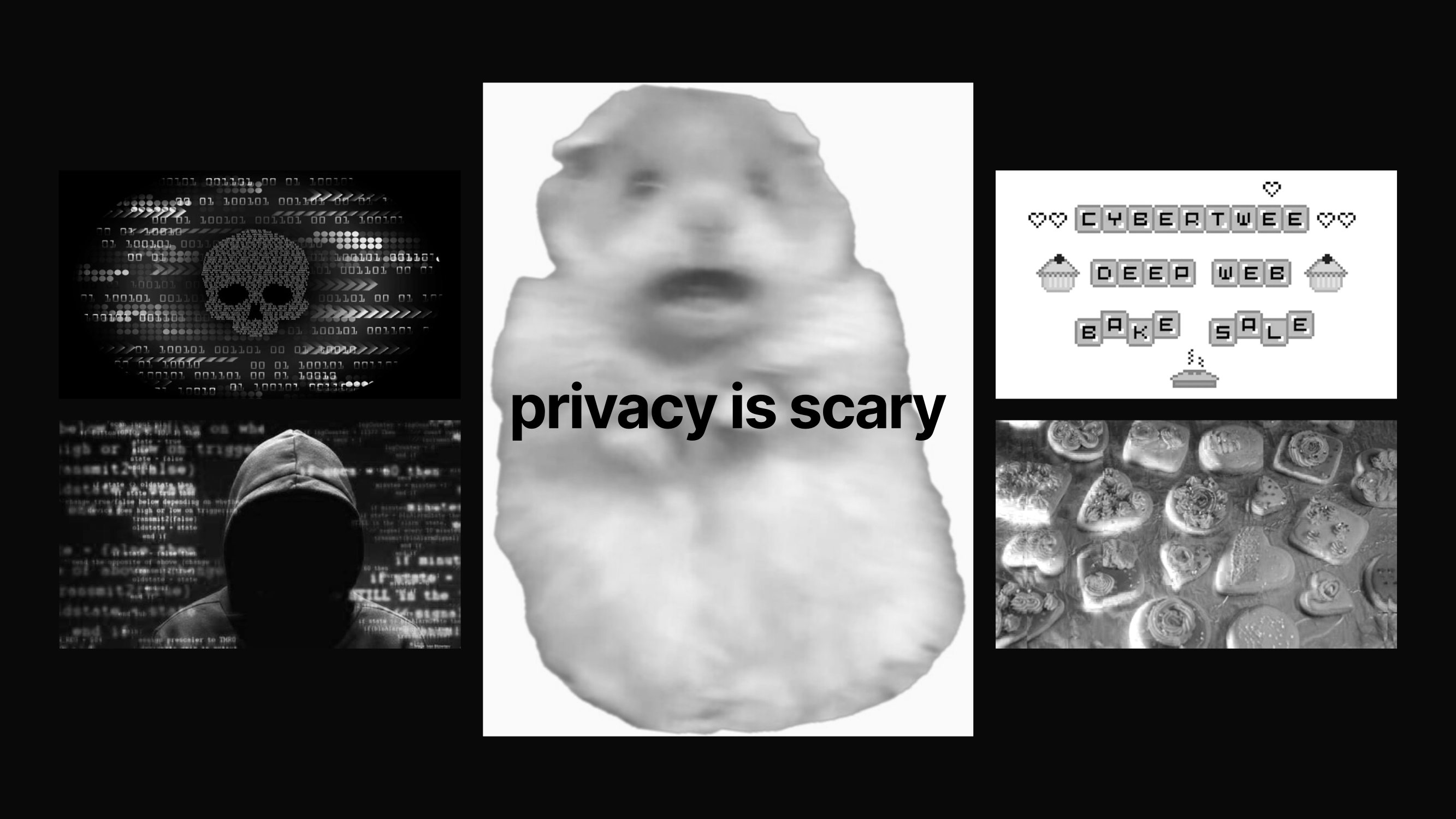
Privacy has been hijacked by a sophisticated anti-meme. This anti-meme is so powerful and has been spread so masterfully that it has redefined the entire privacy memeplex, even orientating entire classes of privacy developers in its service.2
The anti-meme says:
Why do you need privacy if you're not doing anything wrong?
The basic impulse of the anti-meme is to align privacy with criminality. This memetic connection flourishes in a world in which surveillance is already totally normalized. It makes denying surveillance through privacy tantamount to a criminal act.3
To say that the anti-meme has put privacy on the back foot would be an understatement. It's a psychological hijacking of the privacy memeplex that tricks us into a surveillance death-trap.
Privacy developers are backed into a corner, forced to either defend criminality or accept that access to privacy should be restricted. The pro-privacy memes that flow from this reactive position are simultaneously normie and niche.
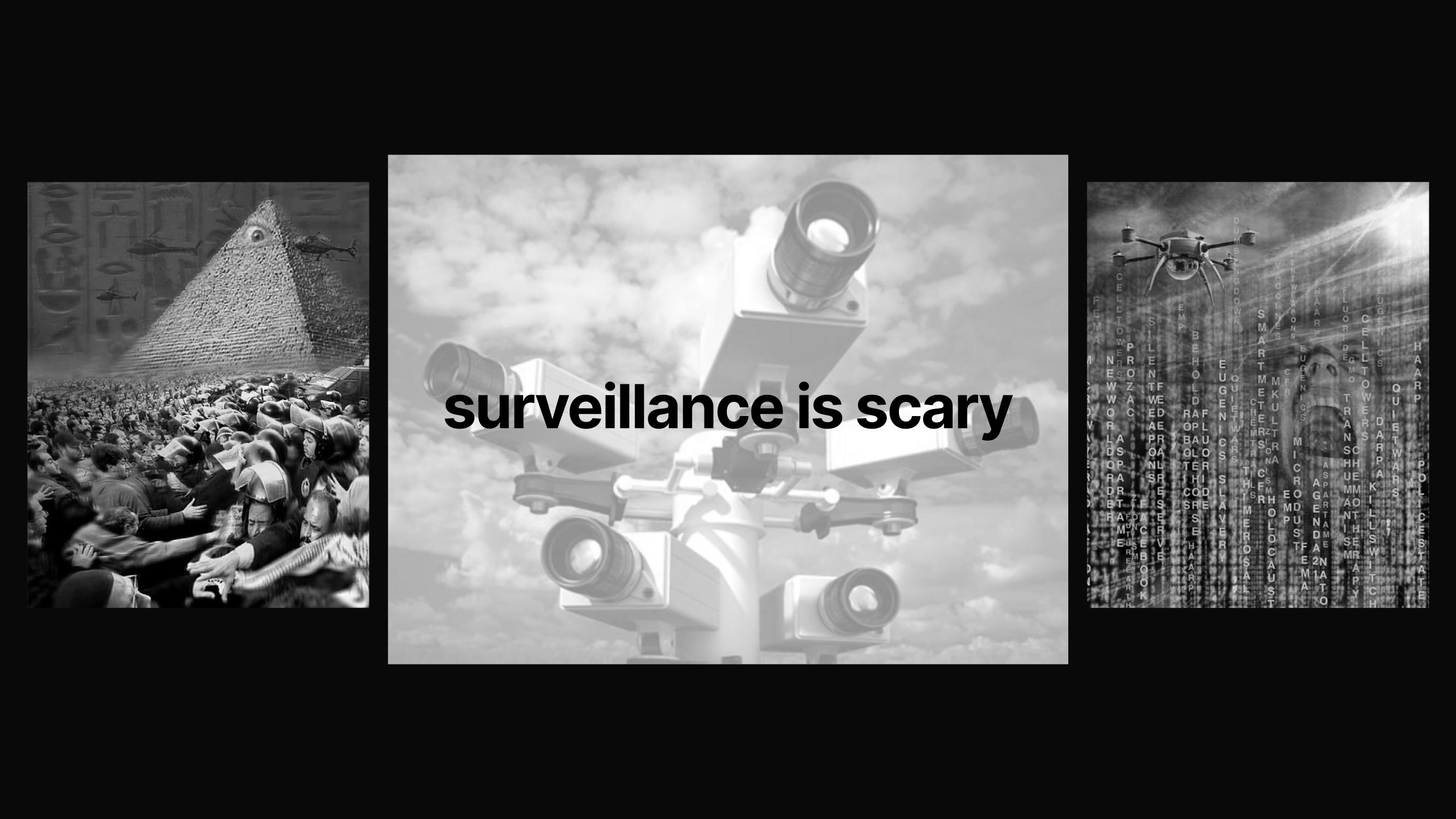
The anti-meme is sophisticated because it anticipates our response. Privacy enthusiasts respond to the anti-meme by saying:
You think privacy is scary? Actually surveillance is scary. I'm more scared of the surveillance state having total control over everything than a few bad actors using privacy technology.
This is a simple inversion of the anti-meme. It's the same argument made by the anti-meme itself but the morality has been inverted.
The inversion of the anti-meme is at the same time its completion. Our reaction to the anti-meme combines horizontal fear (the criminal) with vertical fear (the state) and unleashes total fear, a fear that surrounds us on each side.
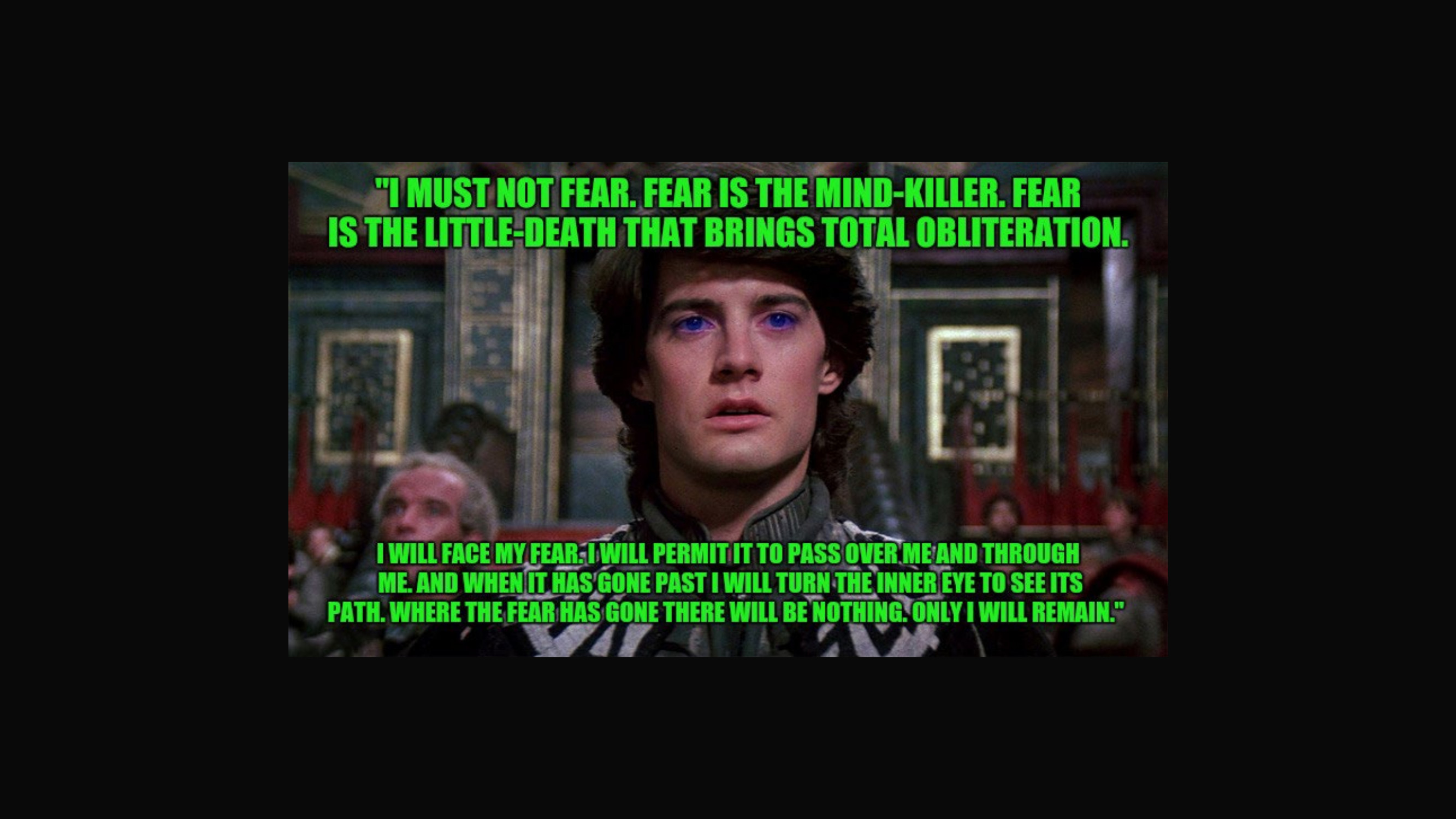
Fear is the perfect psychological weapon. Fear subverts you from the inside, policing your thoughts and turning you reactive. Fear distorts the present and cancels the future, restricting your ability to think long term.
To overcome the surveillance state we must first learn to overcome fear.
Yes Chad
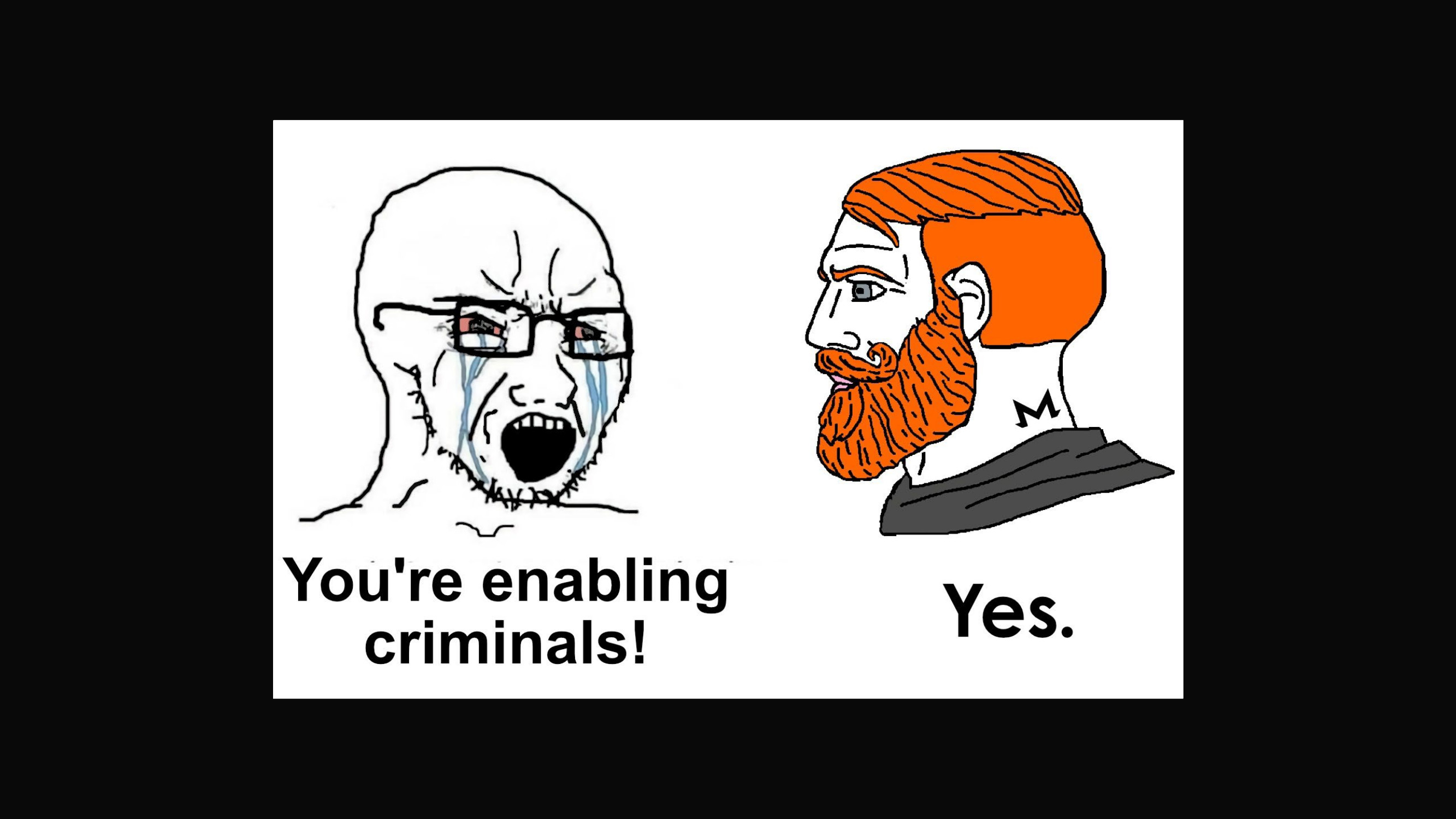
Monero responds to this with the Yes Chad meme.
Yes Chad subverts the fear-based tactics of the anti-meme with simple, unapologetic affirmation. The anti-meme cries: but privacy enables bad actors!. Monero chad says Yes.
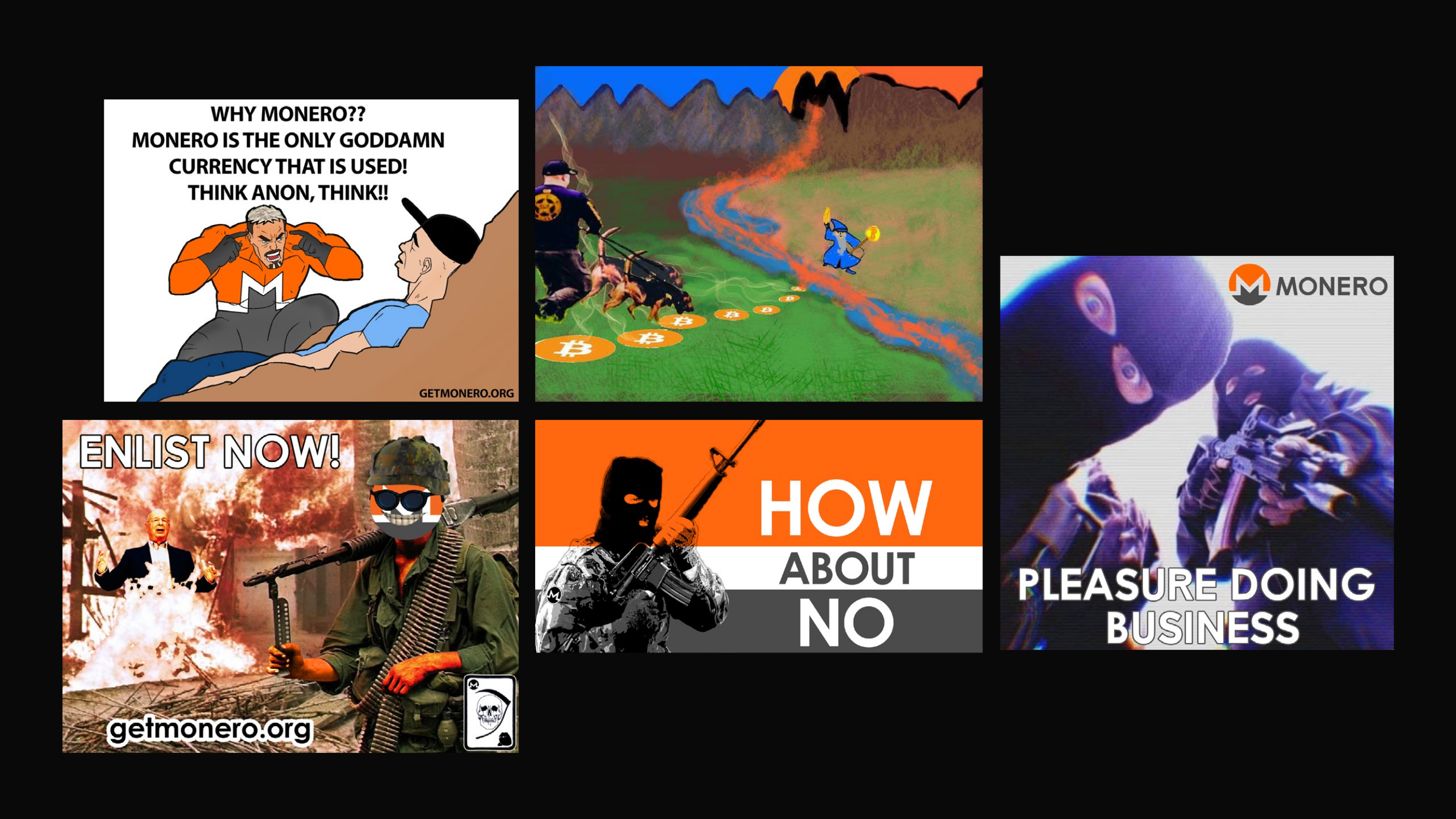
McAfee in the top left says, "Monero is the only goddamn currency that's used! Think, anon, think!" This meme gets closer to what we're looking for. He's appealing to your rationality, encouraging you to think for yourself.
But the Monero memeplex hasn't managed to escape the memetic nexus conjured by the anti-meme. The memes have moved away from fear (to some extent) but they haven't stopped being reactive.

Monero community is agorist; it associates free society with unsanctioned black markets that exist outside the state.4 Monero memes inhabit the negative space left by the state — its blind spots — and wish to grow this negative space until it consumes all state-sanctioned activity.
Monero has the right idea. Instead of trying to nullify and normalize privacy, Monero memes amplify its power.
But we're still backed into the corner the surveillance state has prepared for us. The anti-meme presented us with two options: do you affirm criminality (Yes) or admit that privacy should be restricted? Monero memes say Yes.
We haven't transcended the niche-normie nexus. We must search out another means of escape.
Privacy is normal

Privacy is Normal is the flip side of anti-meme reaction, the side that says No to the narrative that privacy is for bad people doing scary things.
The meme has been spread by Zcash as an effort to move away from fear.5 This meme says: Privacy is not something scary or criminal. It's normal. Nothing to be afraid of.
The implication is privacy is something day-to-day and average. Actually, it's surveillance which is the aberration. Privacy is Normal, surveillance is for bad people doing scary things.
We are still trapped in a reaction to the anti-meme. This time we find ourselves in reactive denial, rather than reactive affirmation.
Reactive denial prevents us from speaking truthfully. The truth is: there was a time when privacy was normal. It was so normal that we lack the vocabulary to even describe it. But today, privacy is not normal.
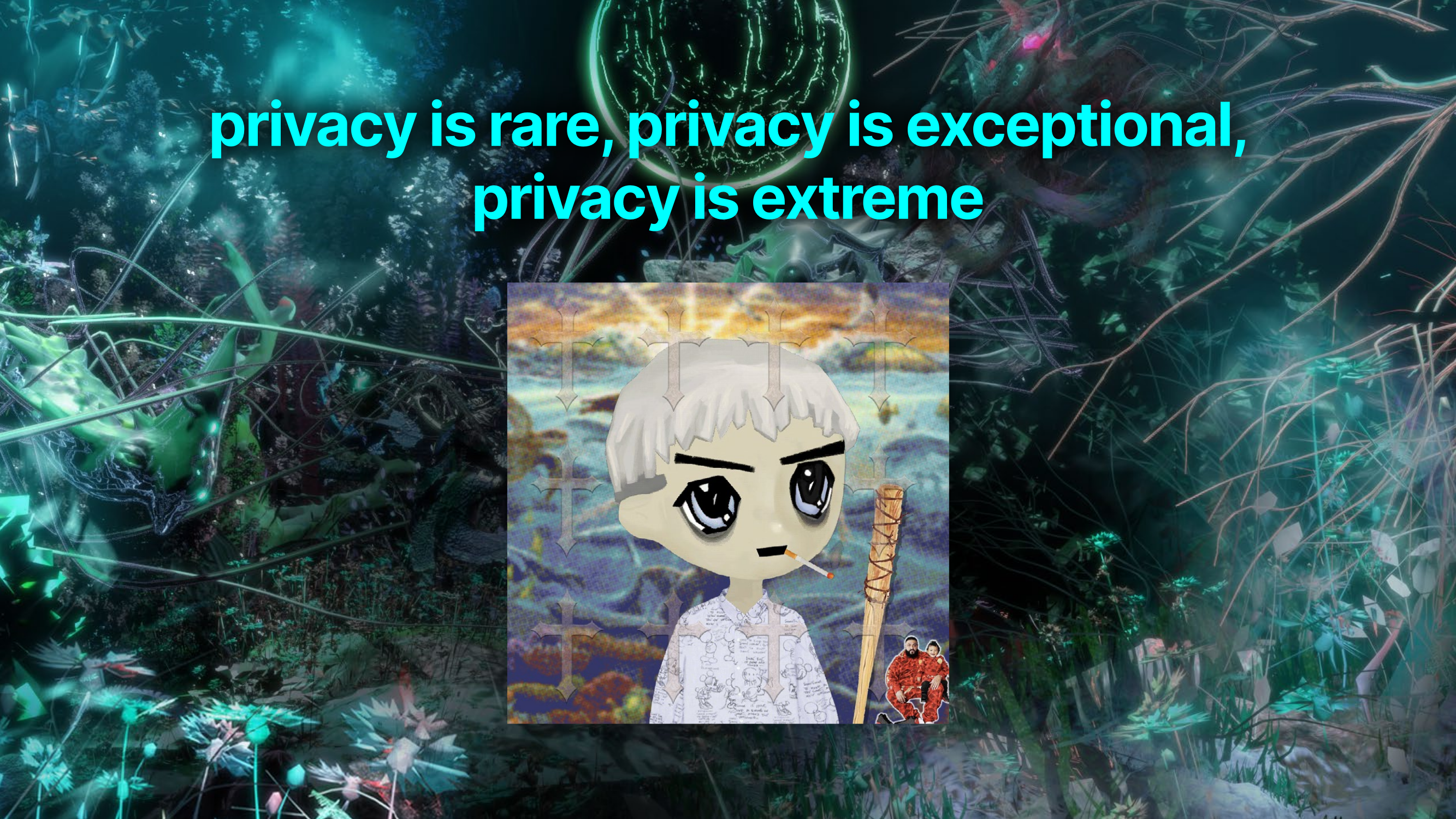
Privacy is something we are forced to claw back from the surveillance superstructure. It's not granted to us in our day-to-day lives. It is a rare gift that has been stolen and must be regenerated by radical means.
Perhaps deliberately, Privacy is Normal downplays the power of privacy. Like all extreme and rare things, privacy has immense power.
Privacy is the power to create new worlds. Privacy memes should orientate around privacy's exceptionality, rather than its normality, especially since it's surveillance, not privacy, which is normal.
Privacy is normie
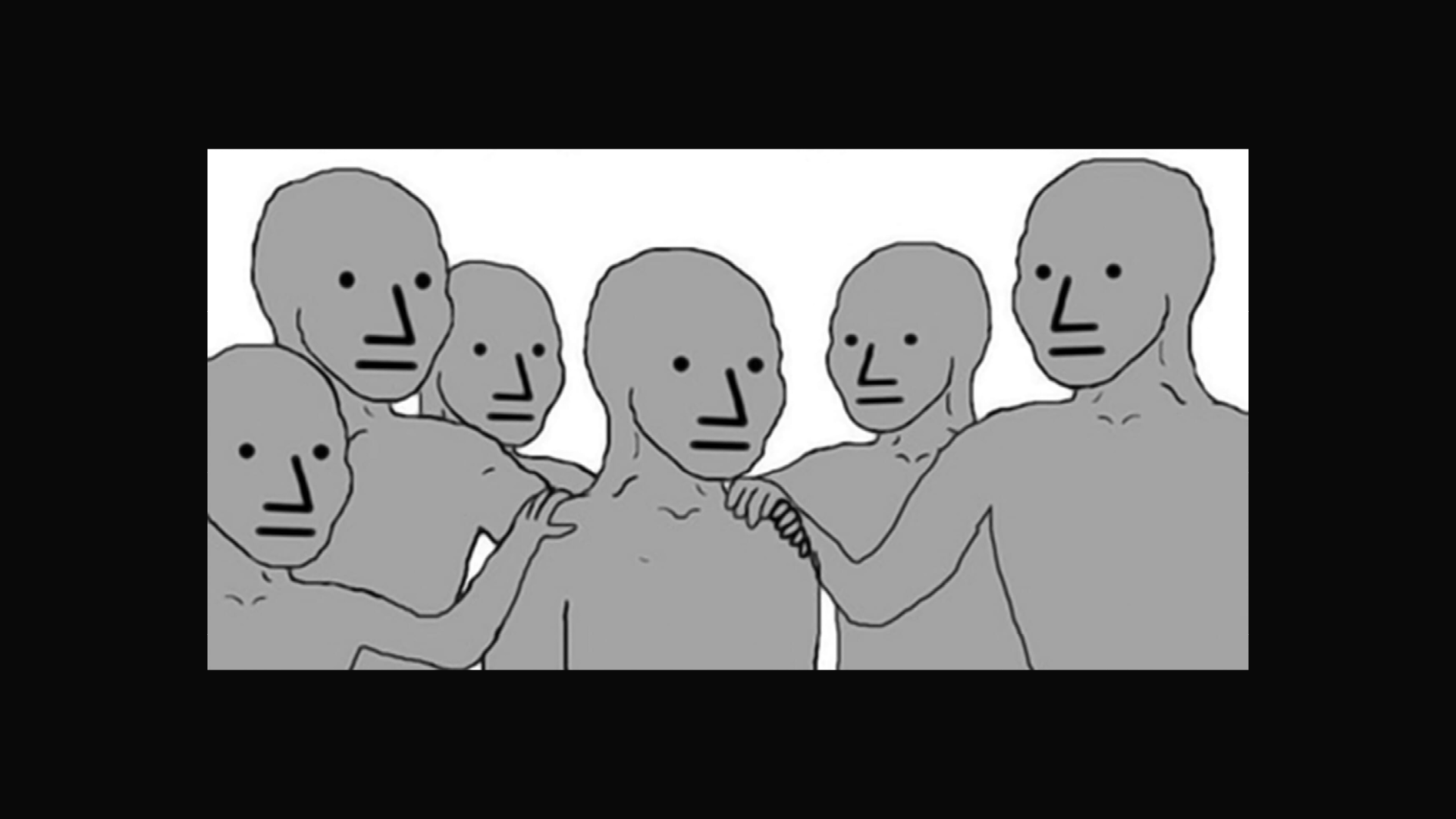
Privacy is Normal downplays the power of privacy by keeping it normie. The effort is to make privacy as undifferentiated, as abstract, as average, as non-threatening and as pro-establishment as possible.
This tendency to obscure power as something vague and undifferentiated has existed in crypto since its origin under the guise of the mass adoption meme.
Mass adoption says a lot about what crypto wants to achieve but nothing about how to get there; it is a sentiment confused with a strategy. We have confused a sentimental desire to empower the world with a concrete plan for how to do so.
This non-strategical mass adoption sentiment has made us blind and ineffective, senselessly probing for a high number of users by making non-descript tooling.

Adoption strategies should be simple and carefully articulated. The smaller and simpler a strategy the higher its success rate. To build effective tools we must retain the ability to think about users in a differentiated way.
Stop building software for normies. Build tools to wake people up.
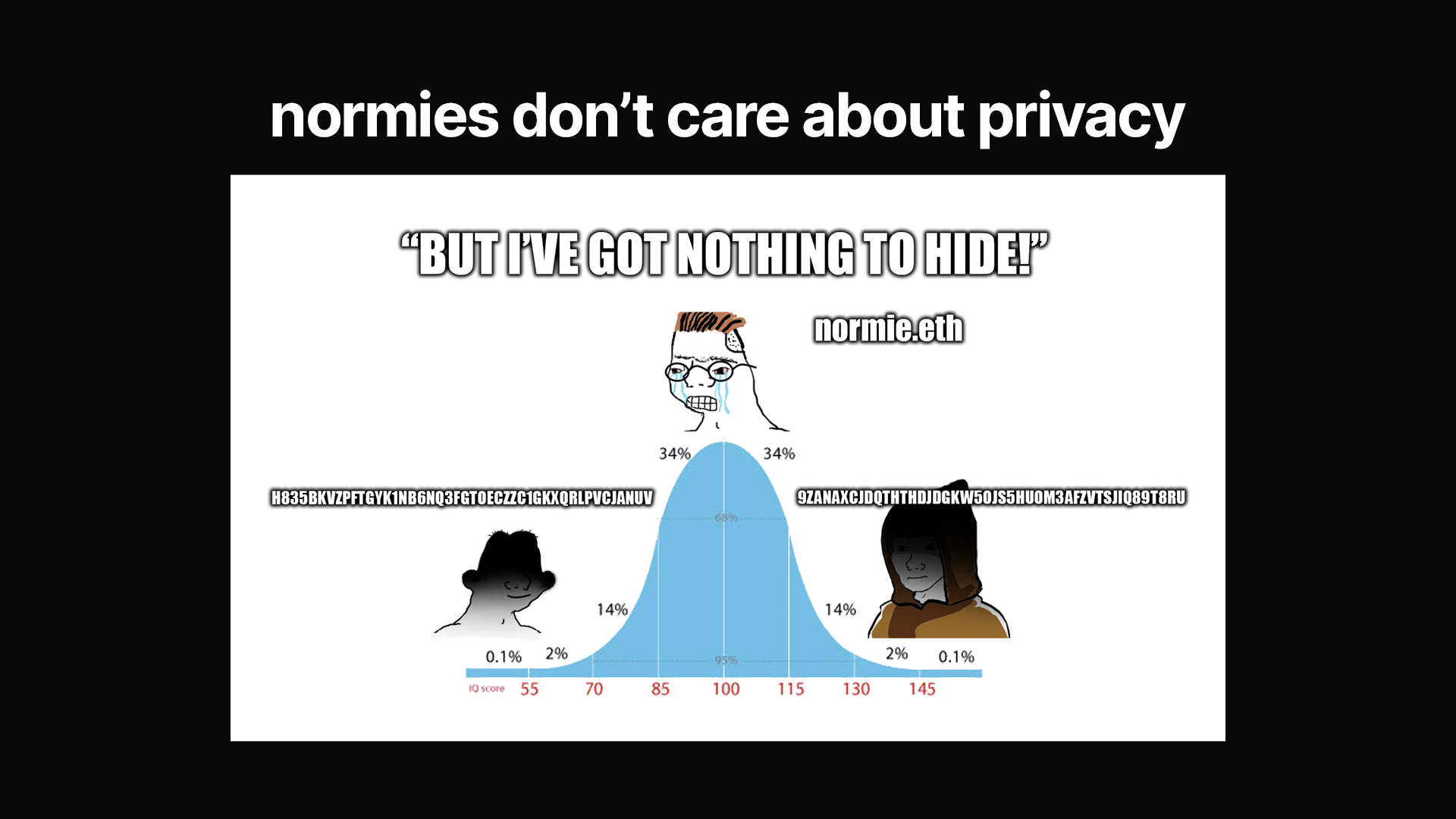
What is a normie? A normie is the indoctrinated subject of propaganda. Healthy people are not normie. People only become normie when they've been transformed by the surveillance state and its information machine. They've lost their morality and politics and have become sheep-like masses.
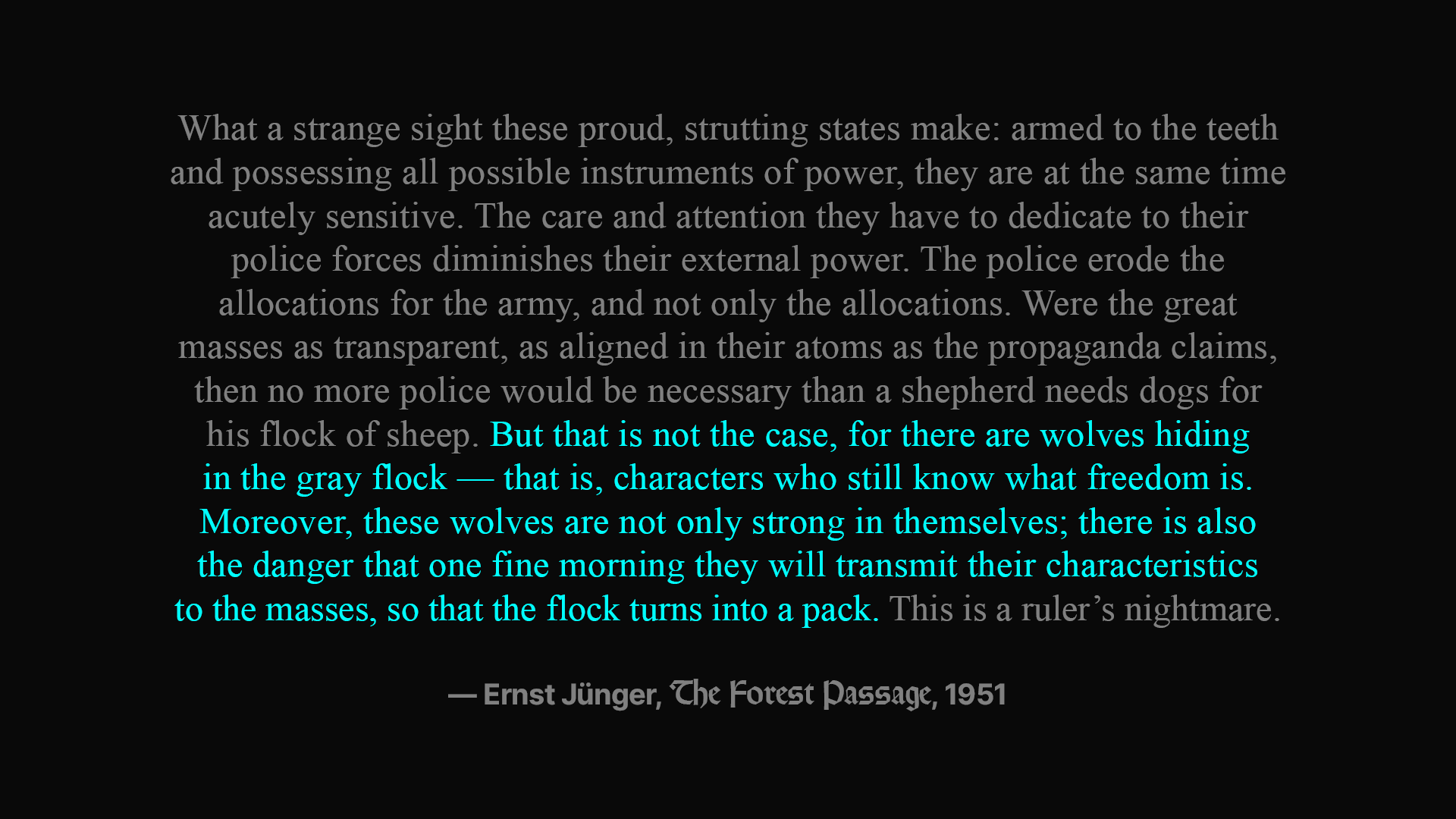
Escape propaganda. Become active and enlightened. Seek privacy as part of that process. Make memes focused on self-empowerment and the seeking of power. Reject the niche-normie nexus that the privacy memeplex has evolved into.

This is what mass adoption actually looks like today. Don't build privacy tech for these companies and the serfs that serve them. Here's a better objective: provide an escape route. Grow the counter-economy.
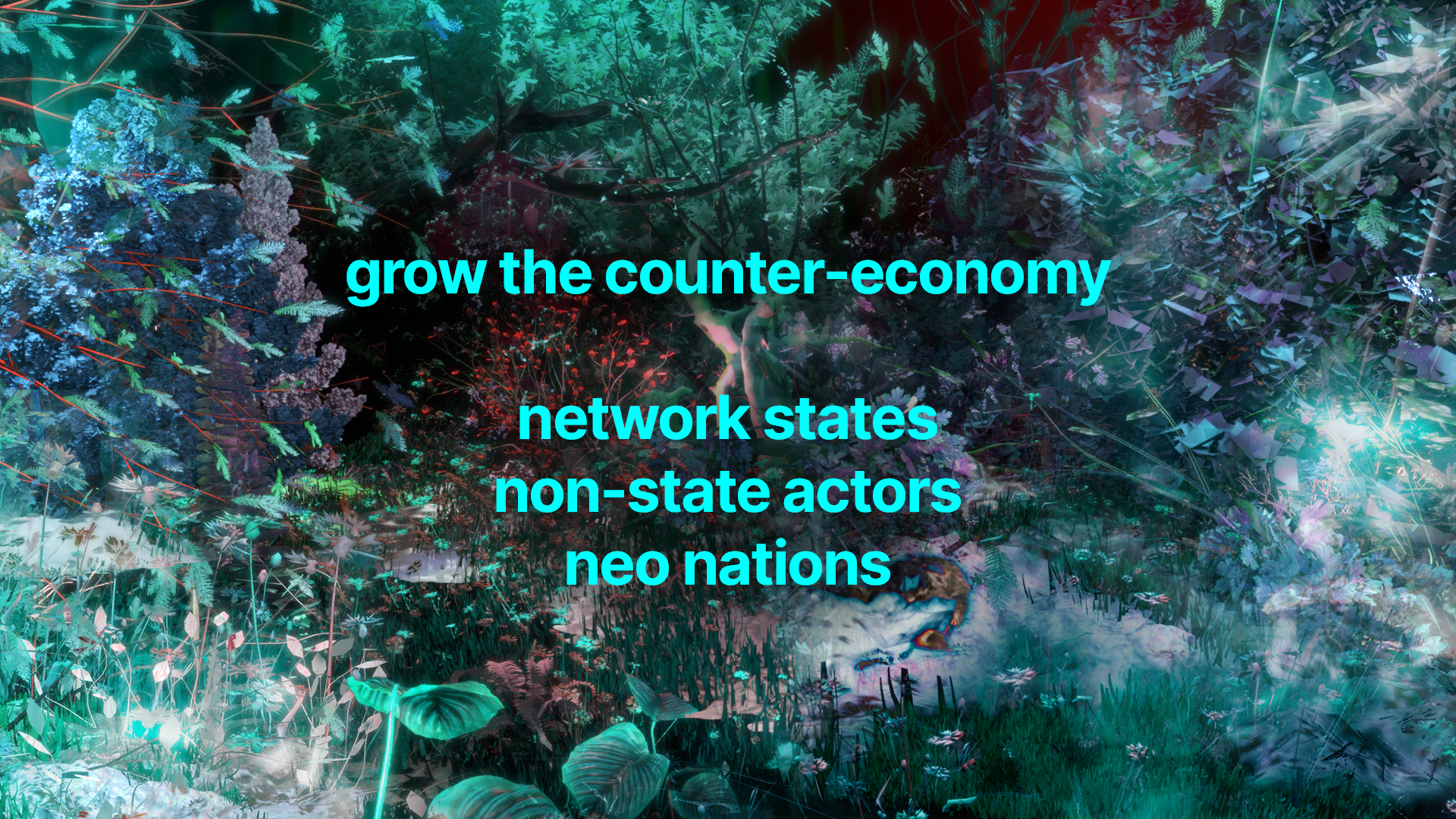
Cypherpunk
Cypherpunk is the reason I got into crypto. I read Cypherpunks: Freedom and the future of the Internet in 2015 and chose to dedicate my life to this cause. The critique that follows comes from a place of steadfast commitment to the potential of this movement.
Memes are destinies. The narrative issues facing privacy today were preconfigured in the cypherpunk meme.
Phil Zimmerman said in the 90s:
Privacy is as apple pie as the Constitution.
He invented PGP, a form of encryption used to anonymize communication. The US Government classified PGP as a weapon and launched an investigation against Zimmermann for illegal munitions exports.
Zimmerman continued to spread PGP during the investigation by printing it in books, cleverly wielding the First Amendment's protection of free speech in his defense. His message was privacy is normal, privacy is lawful, privacy is American.
Zimmermann represents the normcore cypherpunk strain. He gave polite media interviews dressed in his Sunday best. He made himself indistinguishable from, and anonymous within, suburban, conservative, middle-class America. He won the support of the people and the charges against him were dropped.
Today, Zimmermann argues for privacy on the basis of "national security" — the same justification governments use to take it away.6 This is normcore taken to its natural conclusion, undifferentiated and without power.
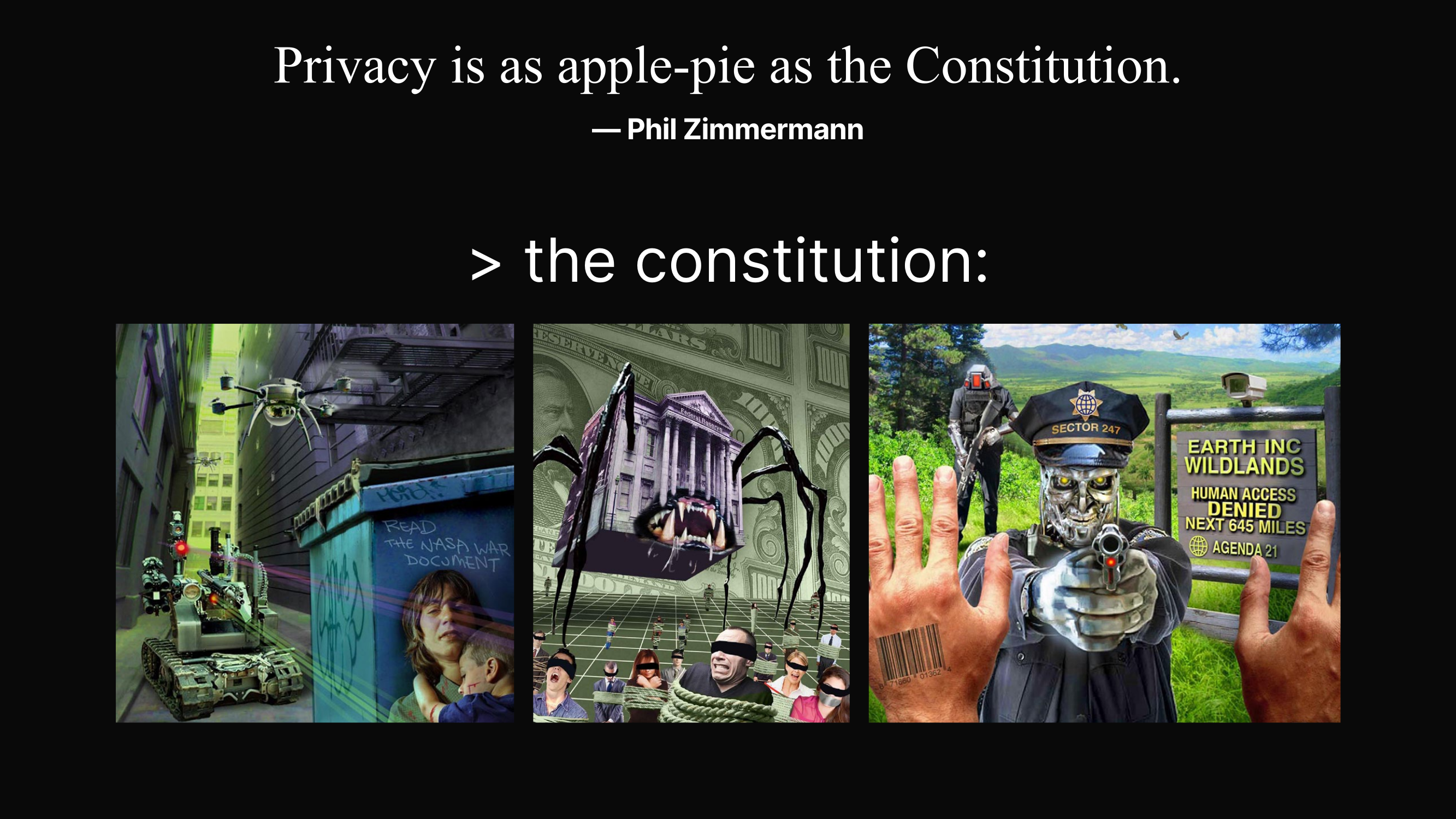
The US constitution is actually pretty based, so this is a joke obviously.
Paradoxically, cypherpunk contains an exact inversion of its normcore energy, inherited from cyberpunk: punk.
Punk is the counter-force to the establishment that unwillingly props-up the status-quo. It fashions itself as the abject, the degenerate, the unconscious. It remains a reflection, a mirror image, wholly negative, incapable of real action, content to remain in the shadows of subculture and always implicitly supportive of the regime.
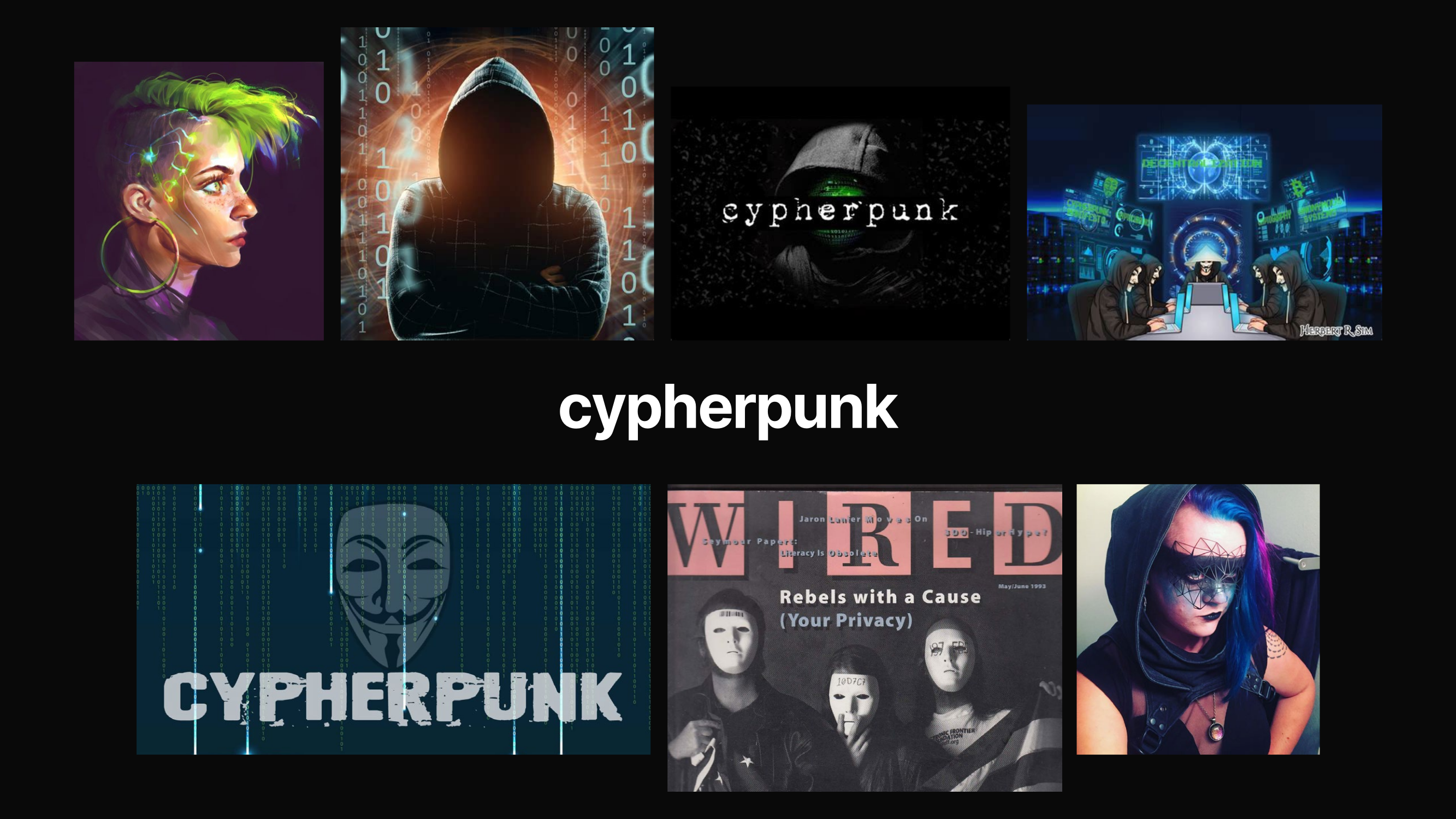
Anon (2018) is a cypherpunk movie set in a surveillance society. The protagonist is a young woman who shows up as a ghost in the system and tries to bypass the surveillance apparatus.
A cop is assigned to her case. He pursues her, romantically obsessed with finding out who she is and what she is trying to hide. The spoiler is she wasn't hiding anything. She just didn't want to be surveilled.
Behind the encrypted shield there was nothing to conceal. That's very sad but also emblematic of the cypherpunk memeplex and its limitations.
An emptiness of purpose can be easily hijacked. Ensuring an emptiness of purpose in subcultures is how the state maintains its role as the central arbiter of morality and politics and thus delineates the boundaries of human activity.7
Replace this emptiness with moral and political motive. If you don't have something to encrypt, protect and affirm through anonymity, create it.
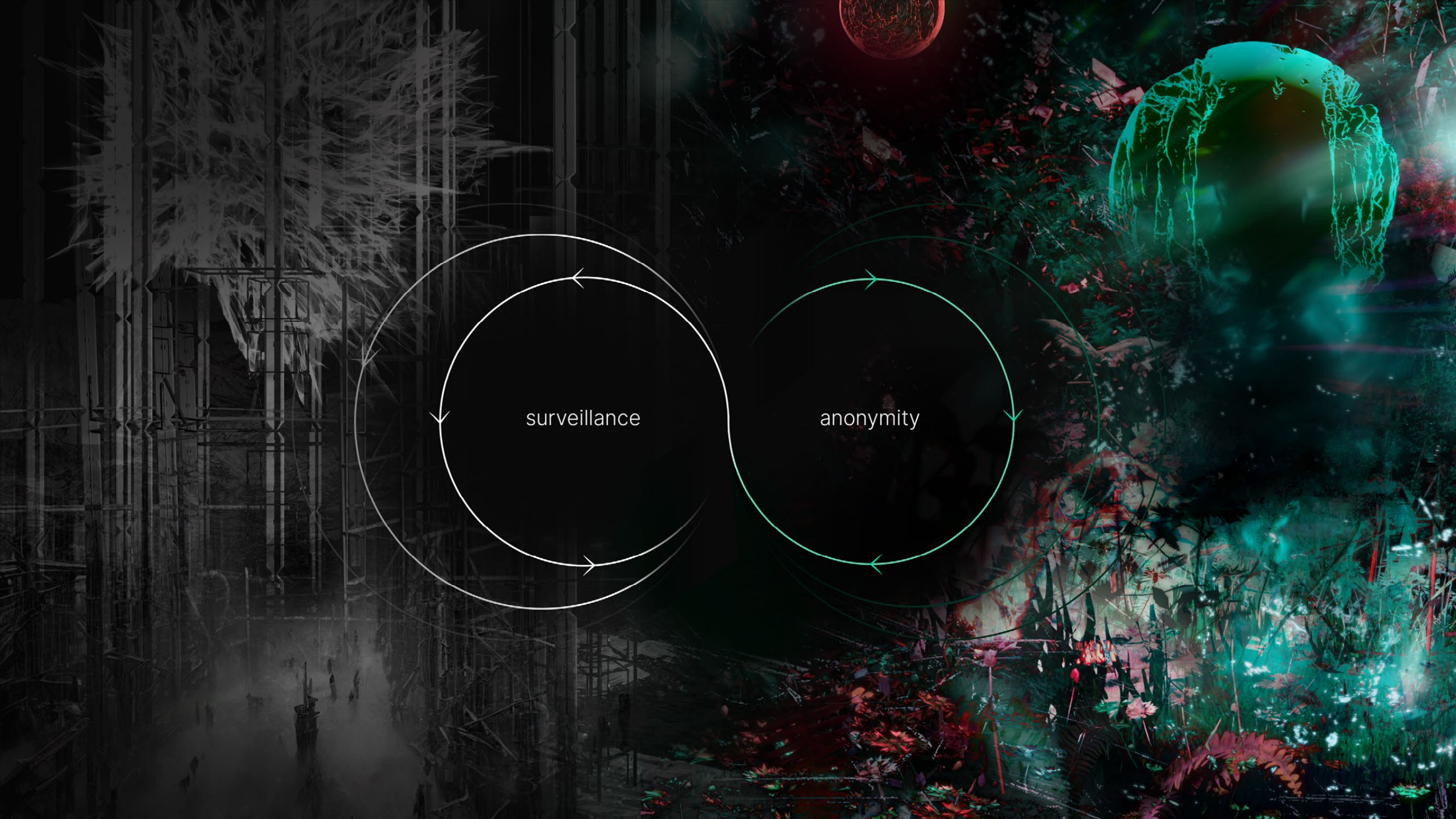
In the 50s, Ernst Jünger prophesied the rise of a new machine world that would threaten to consume human freedom.
He defined a free passage within this machine world using an ancient symbol of anonymity, the forest. In his essay on the topic, The Forest Passage, Jünger notes that the symbols of the forest is a union of opposites: in German the forest is both heimlich (cozy, secret and safe) and unheimlich (uncanny, clandestine and eerie). The forest, for Jünger, represents the synthesis of life and death, and the pure spirit of the rebel who risks death for freedom.8

Jünger anticipated that the life-death hybridity of the forest passage will grant ammunition to the state to conflate it with criminality. In defense, he wrote that:
It is critical for the forest rebel to clearly differentiate himself from the criminal, not only in his morals, in how he does battle, and in his social relations, but also by keeping these differences alive and strong in his own heart.
Privacy's memetic failure stems from its inability to do this. People associate cypherpunk's most useful creation, the anonymous internet or the darknet, with an image of hell.
The anti-meme's alignment of privacy with criminality has caused the conflation of privacy with immorality. We have lacked the ideological strength to properly counter this.
That's why I criticize the Monero memes. I love Monero. I'm not hating on it. But we need to emphasize that society is moral and political.
Darknet markets are the perfect example. Even in the most lawless places, society creates values.9 That is fundamentally what society is.
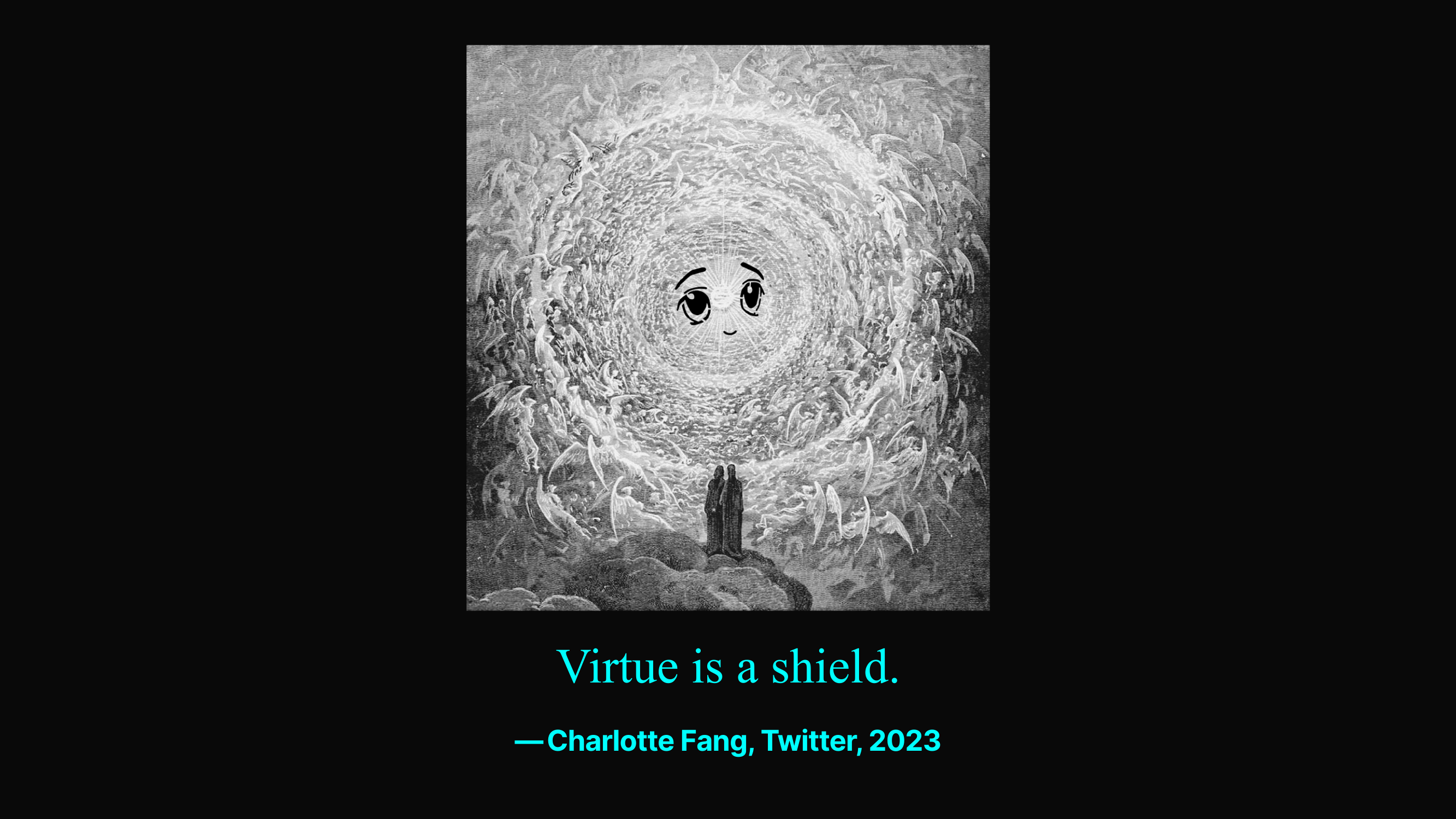
The heart of our defense is our virtue, our certitude, our spiritual clarity. There's no meandering or questioning. Privacy developers are working in service of a noble and unstoppable evolution in freedom. That's a meme worth spreading.
Lunarpunk
The Irish mythological canon speaks of warrior tribes known as the Fianna that lived autonomously on the edges of society. Myths speak of the strict honor code they practiced, hinted at in the Fianna's three mottos:
Glaine ár gcroí (Purity of our
hearts)
Neart ár ngéag (Strength of our
limbs)
Beart de réir ár mbriathar (Action to
match our speech)

20th century Irish revolutionaries revived the warrior culture and wielded it to overthrow British power in Ireland. For the revolutionaries, mythic stories of Ireland's past were prophecies of an Ireland to come:
Our heroic literature is bound to repeat itself in action and within the constraining laws of time and space and the physical world. For that prophecy has been always and will be always fulfilled. 10
The revolutionaries saw themselves as a continuation of an ancient quest for freedom. They sought internal unity as a tactic toward autonomy and were driven by the goal of separation — of casting off the British empire — to define new destinies beyond the British state.
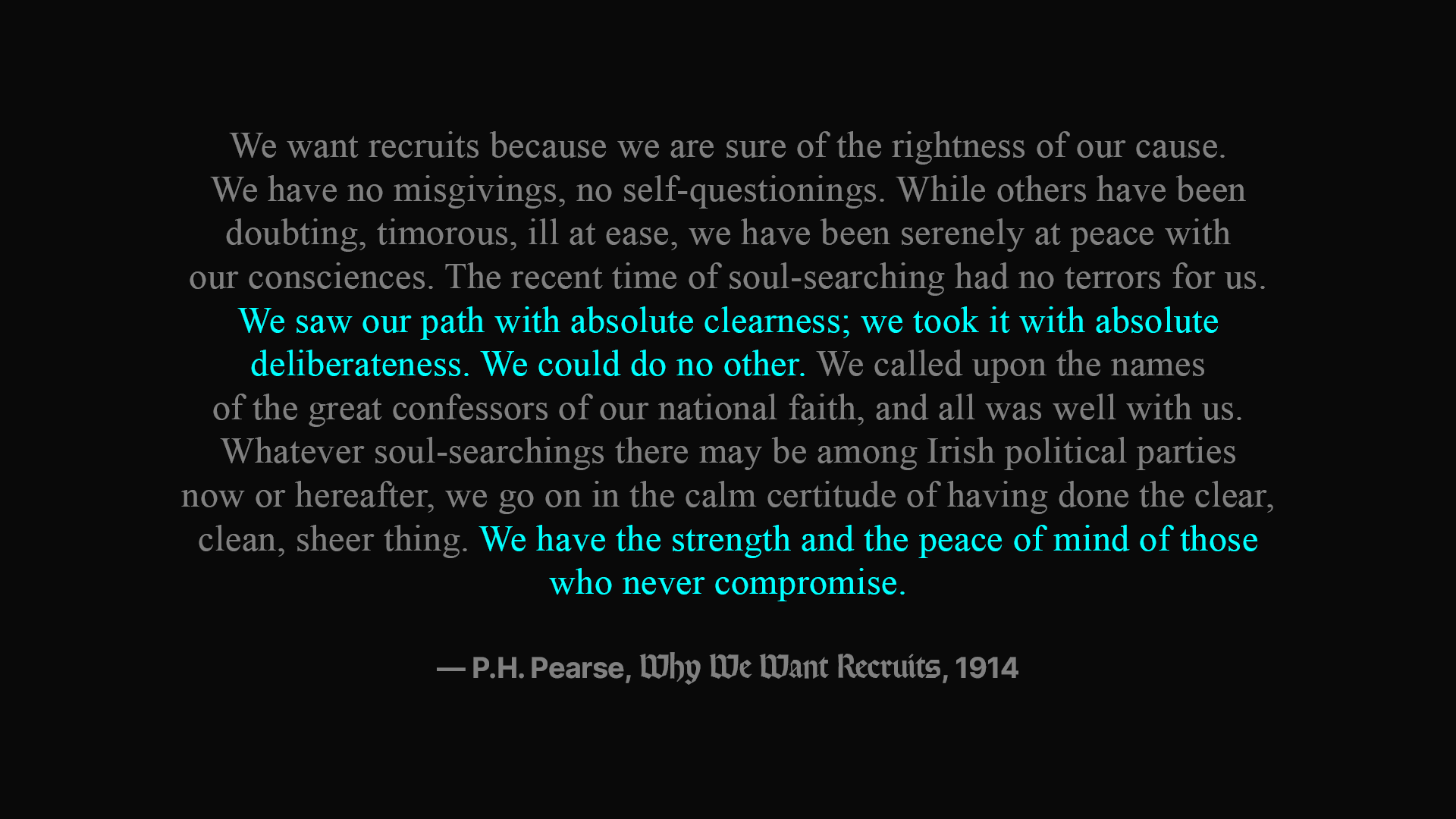
Pearse's writings serve as a reminder that strategical clarity follows ideological clarity. Only by cultivating our spiritual and political core can we grow as a movement.
The state will do character assassinations, call us criminals and terrorists. But we are doing the beautiful and pure thing. We are expanding wild spaces, defending and protecting people, and calling for unity of all forces of autonomy, decentralization and self-sovereign infrastructure. That is a virtuous and heroic enterprise.

The forces of free society battle the surveillance state
I first wrote about lunarpunk in 2022.11 My intention was to reveal feedback loops integral to the growth of anonymity. Surveillance and anonymity are in feedback, and their mutual co-development implies the emergence of two distinct worlds, one anonymous and free, the other surveilled and controlled.
The anonymous world is anti-fragile because it flourishes under attack. The harder anonymity is attacked, the more it is vindicated. With the presence of an alternative, hyper-surveillance simply drives more users and value into anonymous systems.

The end result is not a simple feedback. It is an open spiral. Anonymous software triggers an agorist exit, a cybernetic spiral out from the digital cage.
Lunarpunk is the name of the movement which weaponizes this process in service of freedom. A lunarpunk is an irregular fighter that, faced with a disproportionately large enemy, finds cracks in its machinery and multiplies them.
Lunarpunk anticipates the enemy and integrates their reaction, drawing them into a cycle of escalation that ends in the growth of anonymous off-worlds.
An oversight of the 2022 article (and above animation) was that it defined lunarpunk in contrast to solarpunk.
Lunarpunk should not be understood in contrast to solarpunk or in contrast to cypherpunk, rather is best under positively as the synthesis of solarpunk and cypherpunk.12 Lunarpunk corrects and combines aspects of both solarpunk and cypherpunk to complete the meme, infusing the affirmative, regenerative stance of solarpunk with defensive cypherpunk tactics.

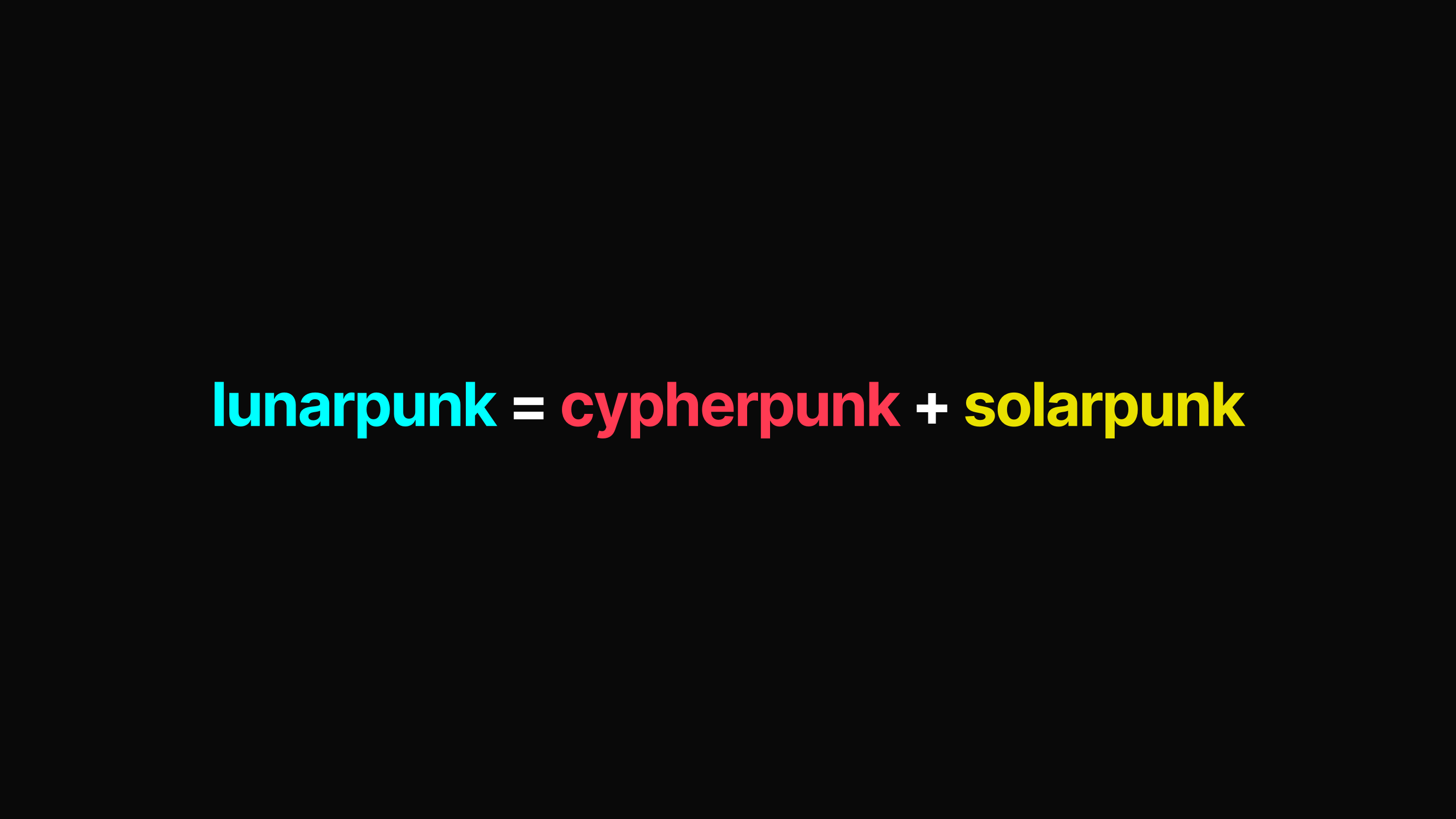
Lunarpunk wishes to define a forward path, to express freedom positively as a freedom to rather than a freedom from. For lunarpunks, the negative freedom from surveillance is a vehicle for the affirmative freedom to define new worlds.
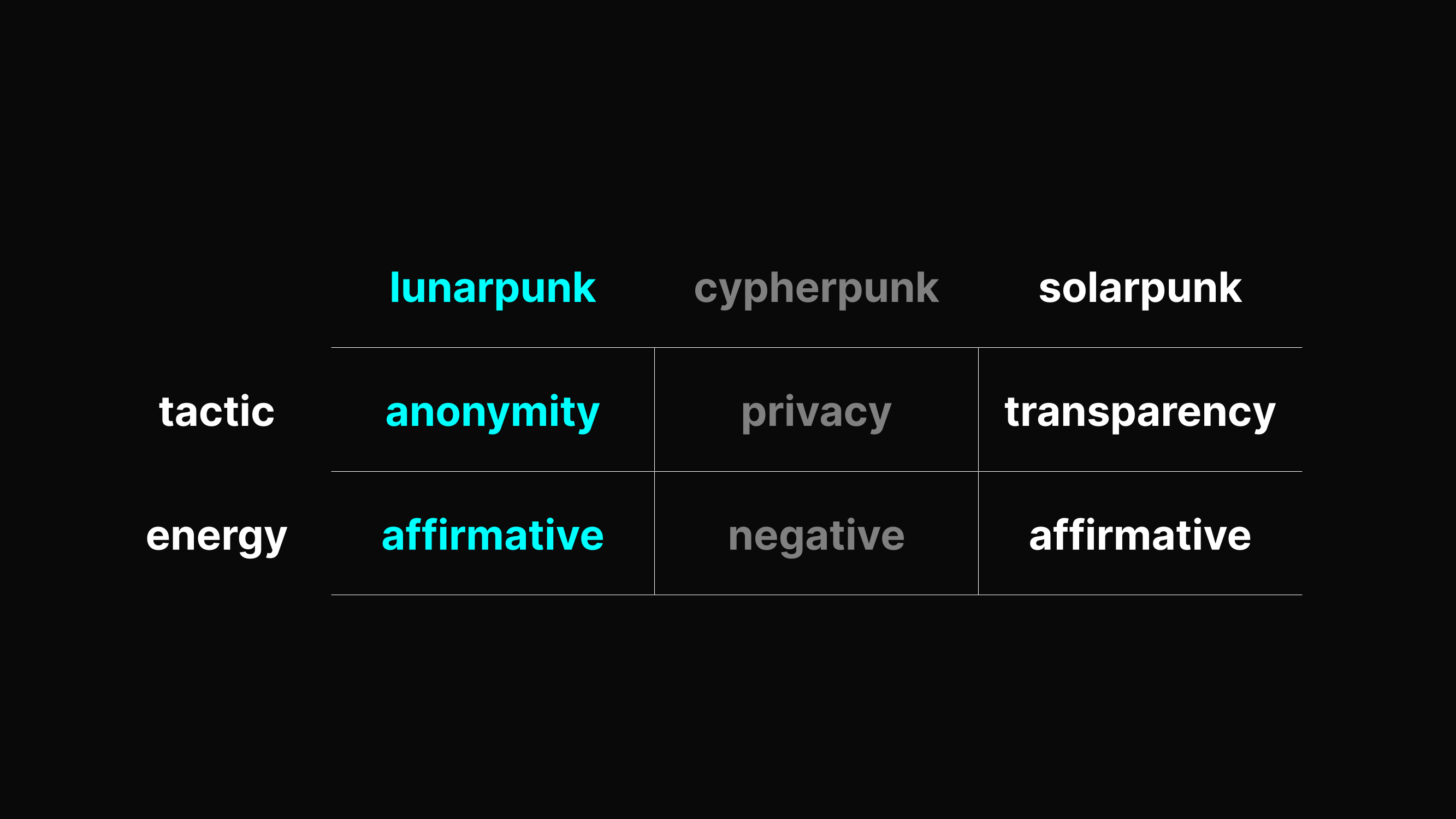

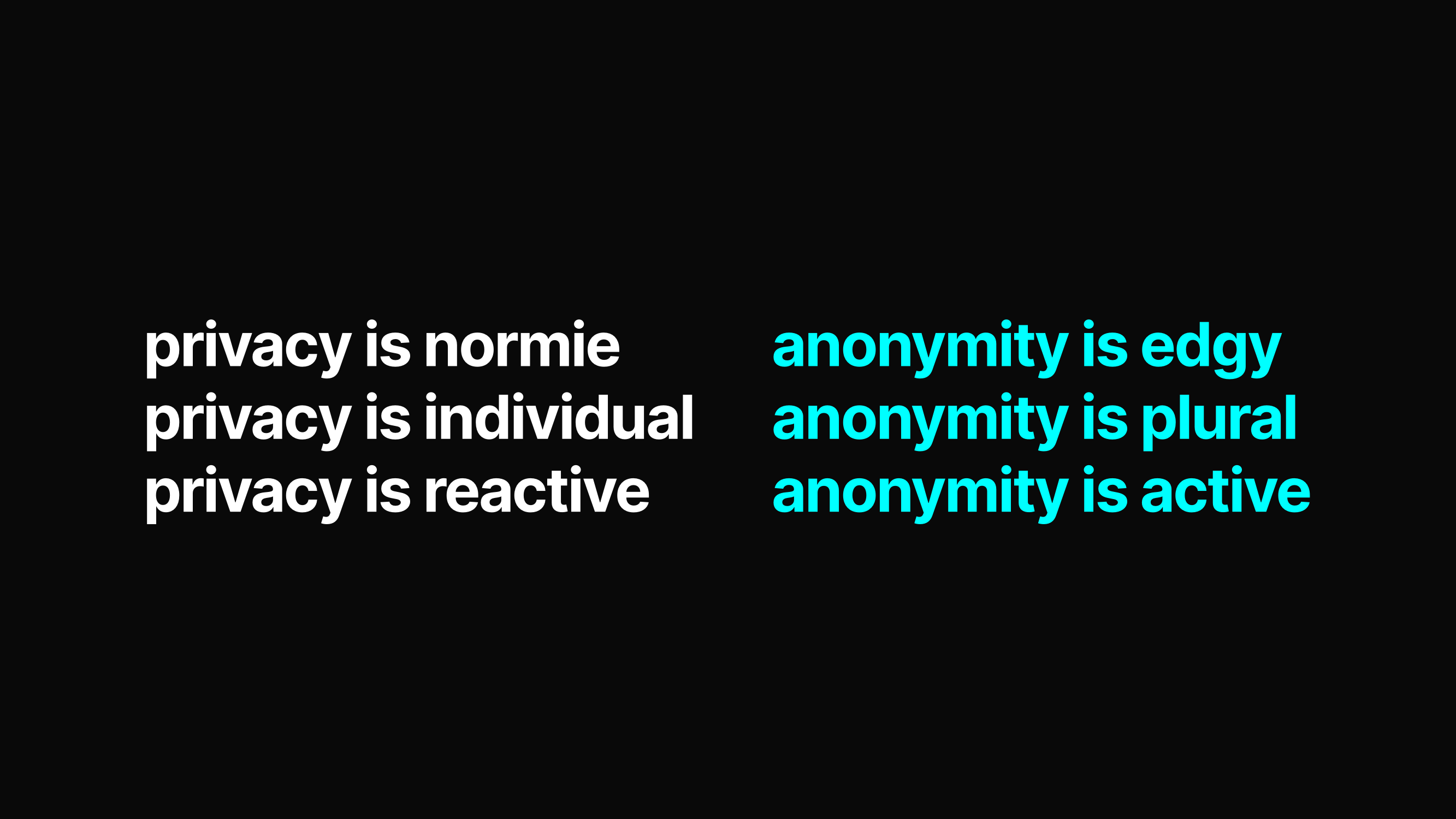
While the word privacy has become associated with something fearful and individual, anonymity is a meme that wants to live. Anonymity is expansive and life-affirming, it wants to multiply, spawn copies of itself and exist in many places at once.
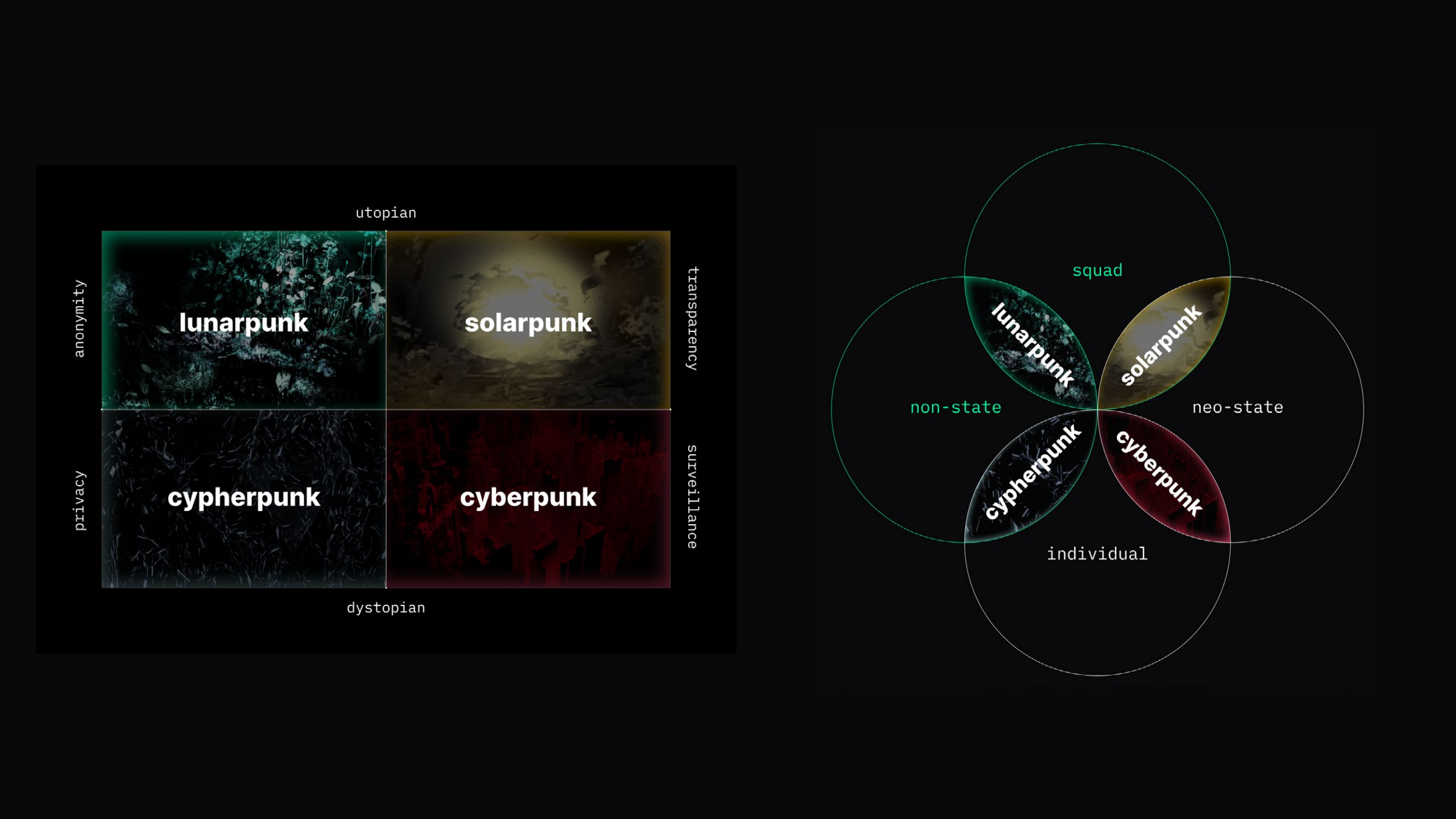
Lunarpunk rejects the niche-normie nexus that privacy has been forced to defend. Its goal is to claim new territory and expand the scope of privacy to something global, popular and radically anti-authoritarian.13

The moon is one of the most popular deities. Throughout history, it has been
worshiped with far more frequency than the sun. It was a important deity in
Ancient Ireland, but its sacred name was protected so absolutely that the
secret has been lost in time. We only know the moon by its cipher gealach
meaning brightness.
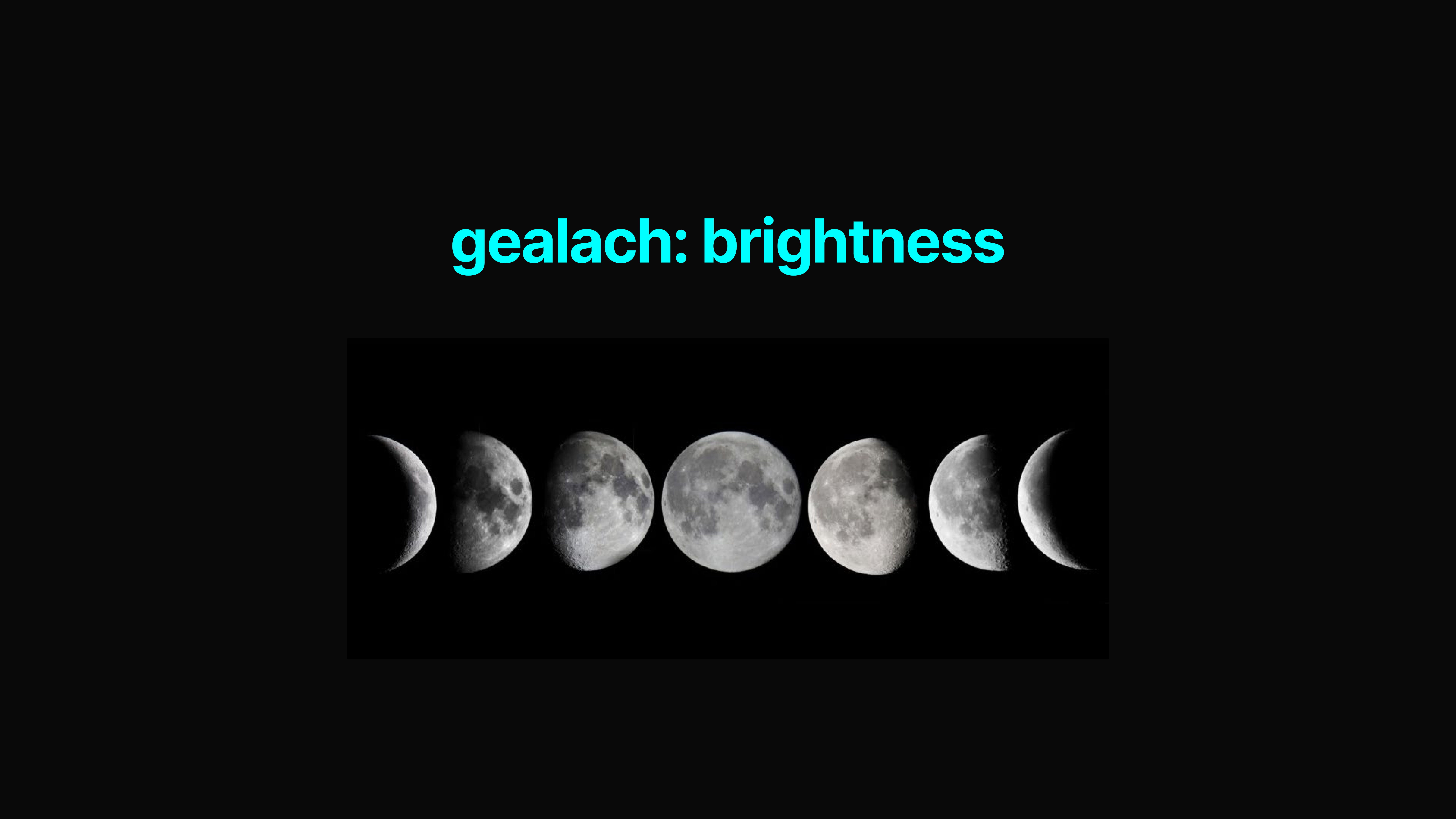
This euphemism, born to keep the power of the deity at arms length, is beautiful because it captures the nature of the moon; the moon is not dark, it is light within dark and the synthesis of light and dark.
According to scholar of religion Mircea Eliade, the moon is a symbol for self-regeneration14. The being of the moon is becoming itself.

The center of all lunar symbols is the ever-decaying, ever-blossoming rhythm of that which returns. In its looping passage across the night sky, the moon lives and dies, dies and is born again, "inexhaustible in its own regeneration." The new moon represents a passage into the underworld: three days of lunar darkness that are always followed by a return.
Eliade connects lunar symbols to floods, flowers, germination, death, rebirth and regeneration. He relates several myths in which the moon sends down a great flood that regenerates the earth and gives rise to a new civilization.15
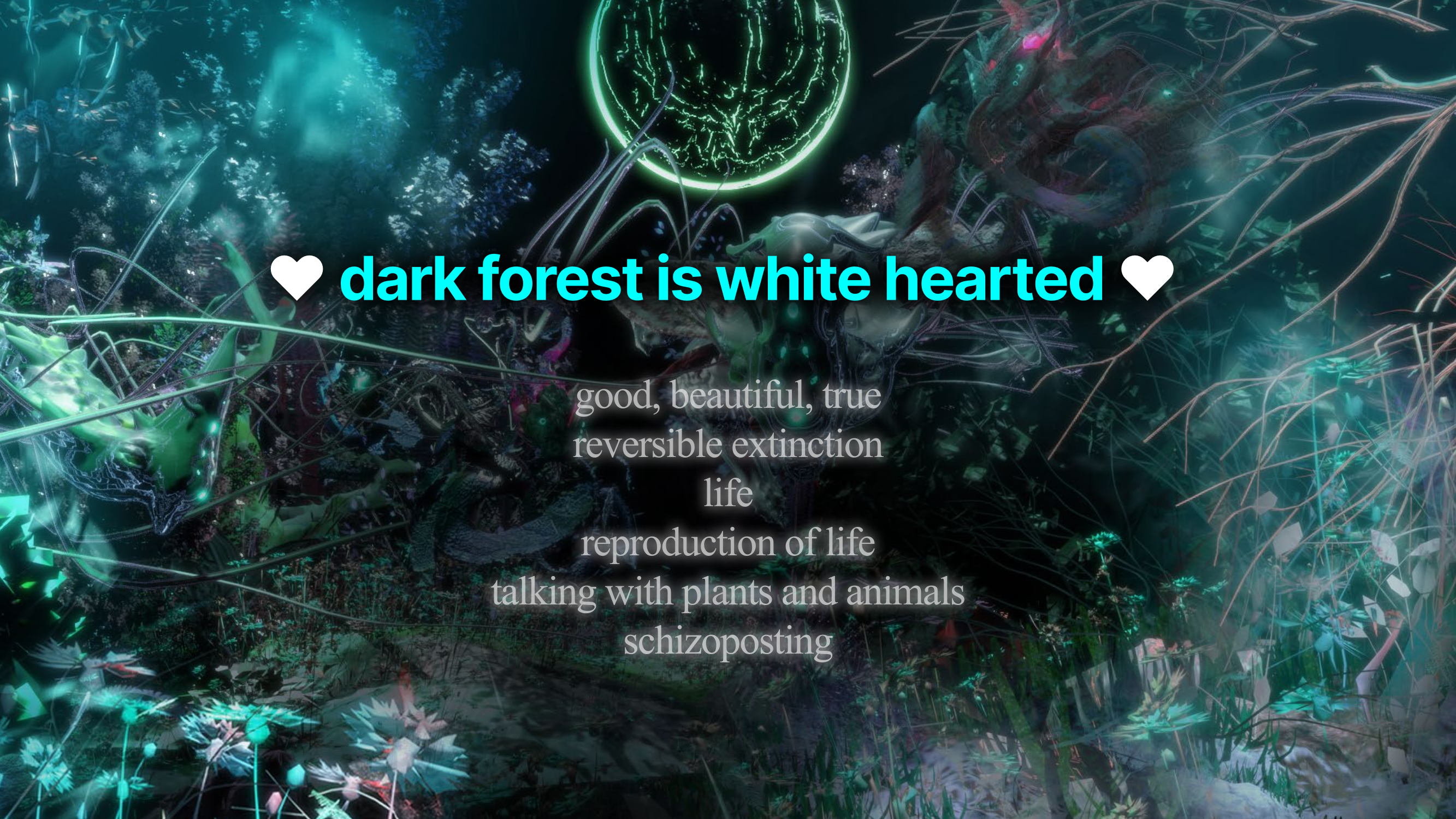
Surveillance imprisons people within an ever-tightening realm of state-sanctioned activity. Lunarpunks say surveillance is a desert because it creates lifeless, homogeneous spaces where there is nowhere to hide.
Encryption, on the other hand, enables spiritual and political differentiation. Encryption is like a language. It defines the contours of a culture. Anonymous tools foster genuine divergence and difference, not the fake manufactured diversity that is sold to us by the surveillance state.

We say anonymity is a forest because anonymity allows non-state forces to flourish. Anonymity is a haven for life and the reproduction of life, for differentiation echoing in all directions, for darkness and brightness and everything in between.
Anonymity protects communities and allows them to chart new destinies. Anonymity is the means to create new worlds.

Let there be dark is a meme we have in DarkFi. When Yahweh declared let there be light he was declaring his absolute authority over all that exists. Let there be dark is an invocation, an affirmation and a correction of this original assertion. To me, it is synonymous with let there be life.
So, let there be dark.
This text is an elaboration of a talk given at Web3 Privacy Summit in 2023. The original speech can be found here. Thanks to @narodism, @post_polar, @aiyadt and @zkarmor for review and additional thanks for @zkarmor for all the beautiful images in this article.
-
See the article that prompted me to write this for an alternate analysis of privacy's memetic failings: Zee Prime, Why Privacy Failed 2 ↩
-
This is a nod to the preoccupation of many developers with using surveillance to judge whether someone is a "goodie" or a "baddie" and only letting "goodies" (read: Westeners) have access to privacy. ↩
-
Tornado cash devs charged with conspiracy. What happened to code as speech? ↩
-
For more on agorism check out the SEK manifesto and Agorism in the 21st Century (I am a coeditor) ↩
-
It is probably more accurate to describe Privacy is Normal as a marketing campaign rather than a meme. It was first authored by Chris Tomeo , Head of Growth Marketing at the Electric Coin Company, the company behind Zcash. It was then briefly adopted by Litecoin to shill MimbleWimble integration. Allegedly Litecoin was pressured to credit Zcash for the images and has deleted most of them, though I have no concrete proof for this claim.
Zcash has been committed to a version of the Privacy is Normal narrative for a while and even sponsored a 2020 report by RAND Europe which demonstrates Zcash was not being used in illicit activities. ↩
-
I am referring to statements made by Zimmermann at Proof-of-work Summit, October 2023, where he explained how his own narrative has shifted over time. In the past he would argue that privacy is necessary to protect grassroots movements, like anti-war activists, from the government. He said the best strategy now is to argue for privacy on the basis of national security, i.e. if people in Western countries hold unencrypted data on Chinese hardware it is a national security risk given Chinese intelligence interests. ↩
-
From Nietzsche's notebooks: "The most important reason for all moral education has always been to achieve the certainty of an instinct, so that one need not be aware of the goodness of one’s intentions or means per se prior to action." See also: Abdullah Ocalan's discussion of morality and politics in Sociology and Freedom and my interpretation of Ocalan in "Explain the dark forest or I will fucking kill you" ↩
-
For more on this topic, see Cody Wilson's essay Death Athletic watch Jessica Solce's film of the same name. ↩
-
I am referring to the moral code that developed on the Silk Road marketplace, where abusive material was banned. ↩
-
Lunarpunk and the dark side of the cycle The article was actually written in late 2021, but it was early 2022 by the time it was published. ↩
-
I owe this insight to Aaron Dunkel, who explored the idea in Punkplex dialectics, Lunarpunk and the politics of crypto ↩
-
Eliade: "Flood corresponds to the three days of darkness, or "death", of the moon. It is a cataclysm, but never a final one, for it takes place under the seal of the moon and the waters, which are pre-eminently the sign of growth and regeneration. A flood destroys simply because the "forms" are old and worn out, but it is always followed by a new humanity and a new history. The vast majority of deluge myths tell how a single individual survived, and how the new race was descended from him. This survivor-man or woman-occasionally marries a lunar animal, which thus becomes ancestor to the race. So, for instance, one Dyak legend tells how a woman was the only survivor of a flood which followed upon the slaying of an immense boa constrictor, a "lunar animal", and gave birth to a new humanity by mating with a dog (or, in some variants, with a stick for firing, found next to a dog). Of the numerous variants on the Deluge myth we will look at one-an Australian version (that of the Kurnai tribe). One day all the waters were swallowed by an immense frog, Dak. In vain the parched animals tried to make her laugh. Not until the eel (or serpent) began to roll about and twist itself round did Dak burst out laughing, and the waters thus rushed out and produced the flood. The frog is a lunar animal, for a great many legends speak of a frog to be seen in the moon, and it is always present in the innumerable rites for inducing rain. Father Schmidt explains the Australian myth by the fact that the new moon halts the flow of the waters (Oak swallowing them). And Winthuis, who disagrees with Schmidt's interpretation, discerns an erotic meaning in this frog myth; but that would not, of course, disprove its lunar nature, nor the anthropogonic function of the deluge (which "creates" a new, regenerated, humanity). Again in Australia we find another variant on the watery disaster produced by the moon. The moon asked man one day for some oppossum skins to wear at night as it was cold, and man refused; to avenge itself, the moon caused torrents of rain to fall and flood the whole area. The Mexicans also believed that the moon caused the disaster, but under the guise of a young and beautiful woman. However, there is one thing to note with all these catastrophes induced by the moon (most of them provoked by some insult paid to it, or by ignorance of some ritual prohibition-that is, by a "sin" indicating that man is backsliding spiritually, abandoning law and order, putting the rhythms of nature out of joint): and that is the myth of regeneration, and the appearance of a "new man". This myth fits in perfectly, as we shall see, with the redemptive functions of the moon and the waters." ↩
